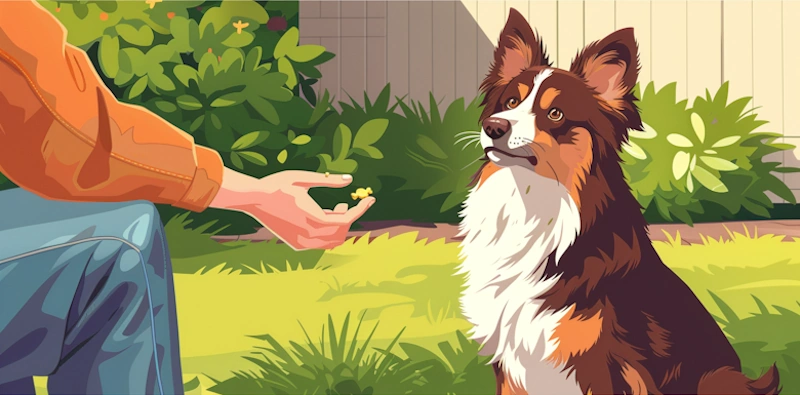Using treats in dog training is a powerful method to motivate and reinforce good behavior. However, like any tool, treats must be used correctly to be effective. This blog explores the role of dog treats in effective dog training and how to use it wisely during training sessions, ensuring they enhance the learning process.
Why Use Treats in Training?
Treats are a form of positive reinforcement and used often for effective dog training. When a dog performs a desired behavior and receives something pleasurable immediately afterward (like a treat), they are more likely to repeat the behavior. The use of treats speeds up the learning process by providing clear, immediate feedback that something good has happened as a result of the dog's action.
Choosing the Right Treats

Quality and appeal: Select high-quality treats that your dog finds irresistible. The more your dog values the treat, the more effective it will be as a reward. Treats should be small and easy to consume quickly so that training momentum isn't lost.
Variety: Using a variety of treats can keep training sessions interesting for your dog. Reserve the most delectable treats for learning new or particularly challenging behaviors.
How to Use Treats Effectively

Timing is crucial: The most important aspect of using treats is timing. The treat must be given immediately after the desired behavior to help the dog make the connection between the action and the reward.
Gradual reduction: While treats are excellent for teaching new behaviors, your goal should be to reduce their use gradually and replace them with other forms of rewards like praise, petting, or playtime. This transition will help prevent a dependency on treats and encourage the dog to perform behaviors for your approval rather than for food.
Avoid overfeeding: Be mindful of the amount of treats you give. Treats should not constitute more than 10% of your dog’s daily calorie intake to prevent weight issues. Consider using part of your dog’s regular meal as treats during training sessions.
Incorporating Treats into Training Sessions

Short sessions: Keep training sessions short and sweet. Dogs have limited attention spans, and the effectiveness of the reward diminishes the longer the session drags on.
Variable reward schedules: Once your dog has learned a behavior, switch to a variable schedule of reinforcement, where treats are given unpredictably. This variability tends to increase the persistence of the behavior.
Clicker training: Combine treats with clicker training for even more effective results. The clicker acts as a bridge, marking the exact moment a behavior is correctly performed and the treat that follows reinforces it.
Common Mistakes to Avoid
Bribing: Ensure that treats are used as rewards, not bribes. Show the treat only after your dog performs the desired behavior, not before. Otherwise, your dog might learn to perform the behavior only when the treat is visible. Read why you shouldn't be using excessive treats during the training session.
Fading too quickly: Don’t rush to eliminate treats. If you reduce the frequency of treats too quickly, your dog might become discouraged. Slowly phase out treats to ensure that the behavior remains strong.
Conclusion
Treats are a valuable tool in dog training, but they are just one part of a broader strategy that should include various forms of praise and rewards. By using treats intelligently and sparingly, you reinforce the behaviors you want without creating a treat-dependent dog. Aim to build trust and respect in training, enhancing your bond through positive experiences